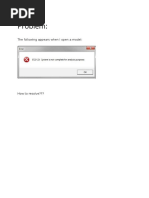Ansys Aqwa Theory Manual
[Diretto] 3477 kb/s [High Speed] 7455 kb/s DVD 4.37 GB BDRip 691.84 MB BDRip 1.43 GB DVD 7.05 GB BDRip 1.46 GB BDRip 699.95 MB SerieTv 347.57 MB SerieTv 700.77 MB BDRip 773.09 MB BDRip 1.37 GB BDRip 1.31 GB BDRip 1.37 GB BDRip 704.84 MB DVD 6.15 GB BDRip 1.09 GB BDRip 2.06 GB Screener 349.97 MB Screener 703.82 MB BDRip 589.27 MB BDRip 2.05 GB BDRip 1.37 GB BDRip 2.05 GB SerieTv 1.37 GB SerieTv 339.25 MB Musica 144.57 MB BDRip 1.37 GB BDRip 1.65 GB SerieTv 794.75 MB SerieTv 628.82 MB BDRip 1.77 GB Risultati della ricerca. Fbi protezione testimoni 2.
AQWA User Manual ANSYS, Inc. Release 14.5 Southpointe October 2012 275 Technology Drive Canonsburg, PA 15317 ANSYS, Inc. Is certified to ISO 9001:2008. Introduction to Aqwa Solver Theory 1.1. Aqwa General Capabilities 1.2. Axes Conventions 1.2.1. Fixed Reference Axes 1.2.2. Local Structure Axes 1.2.3. Ansys aqwa user manual pdf download blogamoicom, ansys aqwa user manual aqwa. Short Introduction To Perturbation Theory For Linear Operators.

Motorola Theory Manual

Aerodyn Theory Manual
ANSYS Aqwa comprises two packages: ANSYS Aqwa Diffraction provides an integrated facility for developing primary hydrodynamic parameters required to undertake complex motions and response analysis. Model creation can be performed through ANSYS DesignModeler software or via other ANSYS structural mechanics tools using a provided ANSYS APDL macro. Hydrodynamic analysis results, such as motions and pressures, can be transferred to ANSYS structural mechanics products, ANSYS ASAS or generically defined FE models for subsequent structural analysis. ANSYS Aqwa Suite extends ANSYS Aqwa Diffraction to include analysis capabilities for global performance of moored and/or connected systems subject to random sea states. Simulations may be static or dynamic in frequency and/or time domain. More advanced requirements, such as dynamic position systems and energy dissipation, can be accomplished through a user-defined function.